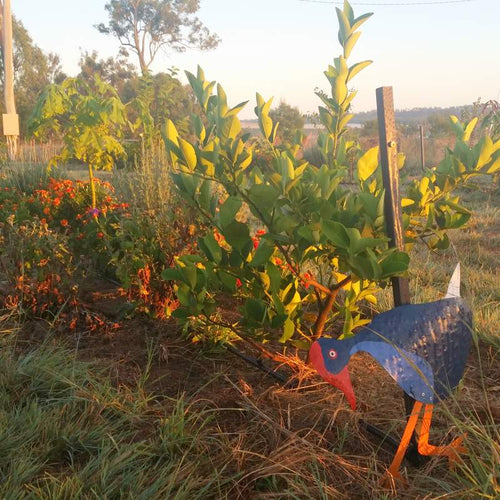Permaculture - Produce no waste
In his book Permaculture: Principles and Pathways beyond Sustainability (affiliate link), David Holmgren, one of the founders of permaculture, has written about 12 design principles. The sixth permaculture principle is Produce no waste. In this post I summarise this chapter and give examples from my own experience.
This is an easy one
This is one of the easiest of all the principles to understand and apply in everyday life. Reducing waste is something that many people do anyway, without any other knowledge of permaculture. I think it is partly because the amount of physical waste you produce is very obvious. You know when your bin is overflowing at the end of the week that you have produced too much waste. Producing NO waste is really the challenge, and requires some careful planning and thought.
 |
| compost! |
This chapter of David Holmgren’s book is structured around the commonly used hierarchy of waste minimisation: Refuse, Reduce, Repair, Reuse and Recycle. In this post I will discuss some examples of how we have applied each level of the hierarchy and the work that remains to reach our target of producing NO waste. Also note that waste includes energy as well as physical waste.
Refuse and Reduce
Plastic bags – I have a large collection of green bags, fabric bags and mesh bags that I use instead of plastic bags, whenever possible, I refuse plastic bags. Sometimes you have to be pretty quick at the checkout to stop them loading up plastic bags. I keeps spare bags tucked into my handbag and in the cars in case we do a spontaneous shopping trip.
Processed foods – I generally refuse to eat processed or takeaway food, and the associated packaging. I prepare as much as possible from food that we have grown or bought in bulk, which reduces packaging.
Reducing the amount of packaging that we inadvertently purchase is the best way to reduce our waste.
Repair
Reuse/Repurpose
My grandparents used to keep old envelopes and scraps of paper for writing lists and notes. I never understood at the time, but now I’ve started keeping paper too, I have a little box next to the computer, and whenever we receive paper which is blank of one side, I put it in the box to use later. I also hoard glass jars for storing anything and everything. And as we don’t buy much in plastic containers, they become rather rare and we hoard them too.
Waste greywater from the bath and washing machine goes onto the garden. And all toilet and kitchen waste goes to the septic system. This really makes us think about what chemicals we use before we buy them, for example, we don’t really have anywhere to wash out acrylic paint, it doesn’t belong in the garden or the septic, so its best to use water based and wash out the brushes in water that we tip on the grass instead.
Recycle
Room for improvement
Most of the waste we produce is either plastic wrapping (as much as I try to avoid it, magazines will arrive in plastic, and we pack all our meat in plastic before we freeze it), and tissues or paper towels are another area of waste, which can at least be composted. Any item that is designed to be "disposable" is wasteful by its nature, as the energy used to produce the item is wasted after one use, no matter how it is disposed or recycled.
Plastic Free July
The Challenge
The challenge is quite simple. Attempt to consume no single-use plastic during July.
"Single-use" includes plastic shopping bags, plastic cups, straws, plastic packaging...basically anything that's intended only to be used once and then sent to landfill. If refusing ALL single-use plastic sounds too daunting this time, try the TOP 4 challenge (straws, plastic bags, plastic bottles &coffee cup lids).
The rules
Attempt to consume no single-use plastic during July.
Remember it's not going to be easy! It is a challenge, not a competition so don't worry about being perfect.
Collect any unavoidable single-use plastic you buy. Keep in a dilemma bag and share it with us at the end of the challenge.
It's up to you regarding how long you participate. You might decide to go plastic-free for a day, a week, a month or longer! However long you choose will still make a contribution.
I would like to use this as an opportunity to analyse when and why we use plastic and consider how we could reduce it further. Last year I ended up with things like a bag that we bought carrots in, and I was able to think about using a re-usable bag for carrots instead. As much as you can try to not use any plastic just for one month, the things that you learn about WHY you use plastic are just as useful.
So now I've side-tracked you with Plastic Free July (Will you join me?), don't forget to also comment on the permaculture principle!
We've been having some great discussions lately, so please tell me, how do you design to produce no waste?
Find out more about Permaculture using these books (affiliate links):
And the other posts in this series:





















Leave a comment